For many, travel is about exploring vibrant cities, breathtaking landscapes, or bustling cultural hubs. But for those seeking a different kind of journey, places of quiet contemplation hold a unique allure. Atlanta’s Oakland Cemetery, for instance, offers a profound travel experience, not just through its history and beauty, but through the rich symbolism etched in its very stones. As a serene escape and a historical archive, Oakland Cemetery has long been my personal sanctuary, a place where stories are whispered through monuments and meanings are found in the intricate details of Victorian artistry.
My connection with Oakland began unexpectedly in 1988, while studying at Georgia State University nearby. Participating in a production of Our Town, I sought authenticity by rehearsing cemetery scenes within Oakland’s grounds. This initial encounter blossomed into a deep appreciation, leading me to become a tour guide in 1989 with the Atlanta Preservation Center. From a small group of 15 guides, we’ve grown to over 145, reflecting the increasing interest in this historical landmark. In those early days, tours were simpler, more intimate – a far cry from the organized operations today with its gift shop and facilities. Yet, the essence of Oakland, its silent stories and symbolic language, remained unchanged.
Drawn deeper into Oakland’s embrace, I befriended the cemetery sexton in the early 1990s. This connection led to the serendipitous purchase of grave plots near the legendary golfer Bobby Jones. While not a golfer myself, the thought of an eternal neighbor in such esteemed company adds a touch of whimsical charm to the idea of my own final resting place.
Oakland’s most celebrated residents, Bobby Jones and Margaret Mitchell, author of Gone With the Wind, draw countless visitors. Mitchell’s novel, a global phenomenon translated into over 40 languages, and its iconic 1939 movie premiere in Atlanta, are still palpable in the city’s atmosphere. Even a lunch at the Georgian Terrace Hotel, where Clark Gable and Vivian Leigh stayed, evokes the glamorous era of Gone With the Wind.
However, beyond the famous names, it was the Victorian symbolism woven into Oakland’s monuments that truly captivated me. This fascination culminated in the creation of a special Victorian Symbolism Tour in 2000, one of the first of its kind. Later, in 2010, this tour evolved into my book, Sacred Symbols of Oakland: A Guide to the Many Sacred Symbols of Atlanta’s Oldest Public Cemetery, a testament to the enduring power of these silent storytellers.
Having spent years wandering Oakland’s paths, deciphering its silent language, I want to share five monuments that particularly resonate, each a window into the Victorian era’s unique perspective on life, death, and remembrance. These monuments aren’t just stone; they are symbolic journeys in themselves, offering travelers a unique lens through which to understand a bygone era.
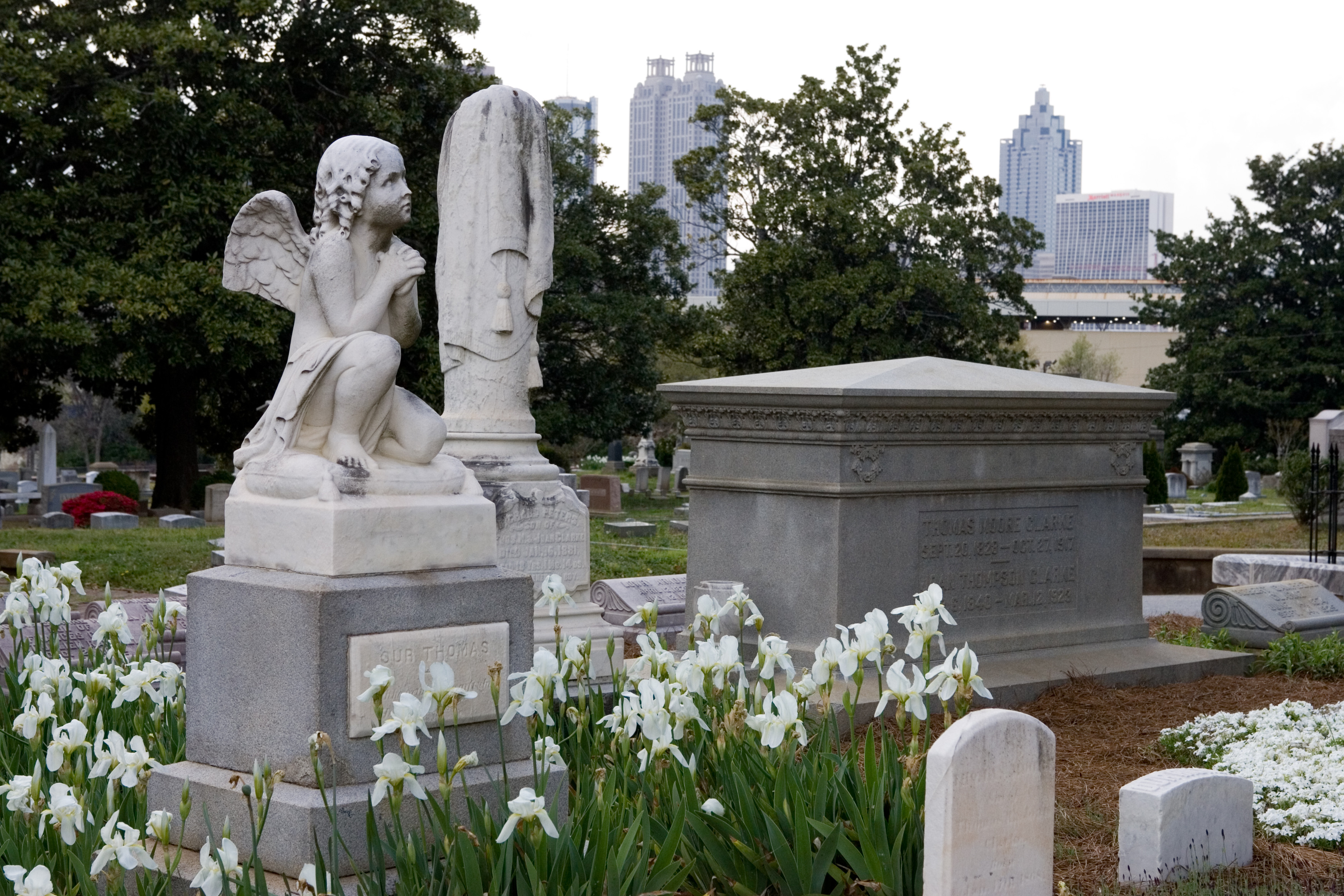 our thomas a_G9B5906 pag 2
our thomas a_G9B5906 pag 2
Our first stop is “Our Thomas,” a poignant memorial from 1870 for a child lost too soon. Thomas is depicted as a baby angel, a Victorian symbol of innocence ascending to heaven, acting as a guardian and divine messenger. He kneels on a pillow, representing peaceful slumber, reflecting the Victorian Christian belief in death as a restful prelude to the Second Coming. Adjacent to Thomas is a broken column draped with a mantle. The broken column universally signifies a life tragically cut short, a common motif in Victorian cemeteries lamenting child mortality. The mantle, or shroud, symbolizes the veil between the earthly realm and the afterlife, a poignant representation of transition.
Originally designed for English gardens, sculptures like “Our Thomas” gained wings specifically for cemeteries. These wings poignantly reflect the high child mortality rates due to diseases like diphtheria and smallpox, before widespread vaccinations. These child angels became a common and touching symbol in Victorian cemeteries across the United States, a silent testament to grief and remembrance.
Notice the modern Atlanta skyline subtly framing this historical scene. This striking juxtaposition is a recurring theme in Oakland – the old and the new, life and death, constantly in dialogue. At night, the city lights cast an ethereal glow upon the ancient monuments, creating an atmosphere that is both eerie and beautiful, a reminder of time’s relentless march.
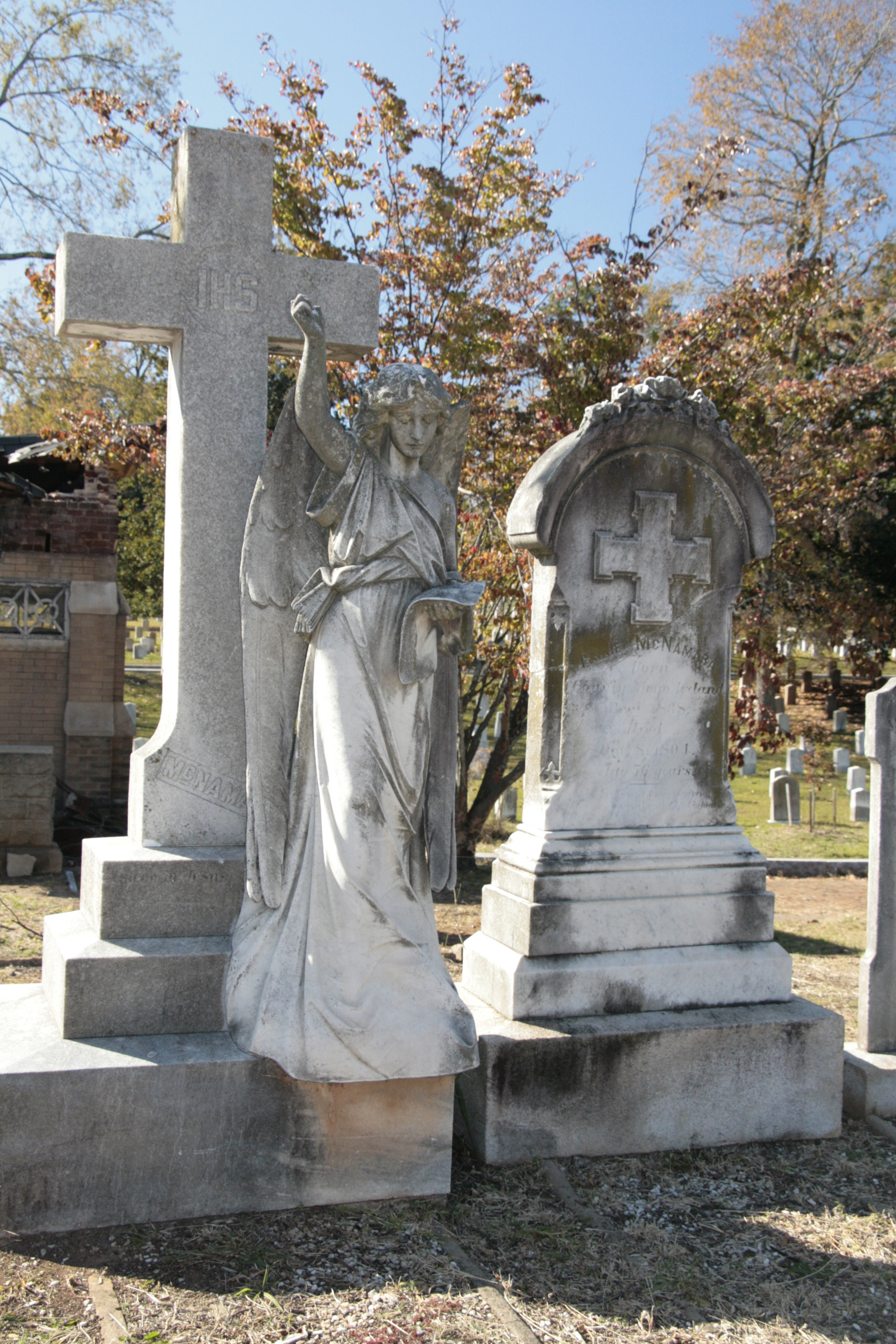 mcnamara angel_MG_2641 page 3
mcnamara angel_MG_2641 page 3
Next, we encounter the McNamara angel, erected around 1901. Angels in cemeteries serve multiple symbolic roles: guardians of the departed, messengers between worlds, and protectors of sacred ground. This angel holds a Latin cross, a powerful symbol of resurrection, referencing Christ’s sacrifice. The “IHS” inscribed on the cross are the first three letters of “Jesus” in Greek, reinforcing the Christian context. A five-pointed star adorns the angel’s brow, representing heavenly wisdom and divine guidance. She holds a writing utensil, poised to record the good deeds of the deceased, ensuring their path to eternal life – a beautiful metaphor for remembrance and legacy.
Remarkably, this angel stood firm during a major tornado that struck Oakland in 2008, even as the cross behind her toppled. This resilience adds another layer to her symbolic role as protector.
Interestingly, this section of Oakland holds a historical connection to Irish immigrants in Atlanta during World War I. Lacking permanent addresses, many draft-age Irish men listed Oakland Cemetery as their residence, perplexing the Atlanta War Office. The angel, now missing a few fingers from the tornado, still points heavenward, a timeless gesture of guidance. Obelisks, another common sight in Victorian cemeteries, also share this upward directionality, all symbolizing the soul’s ascent.
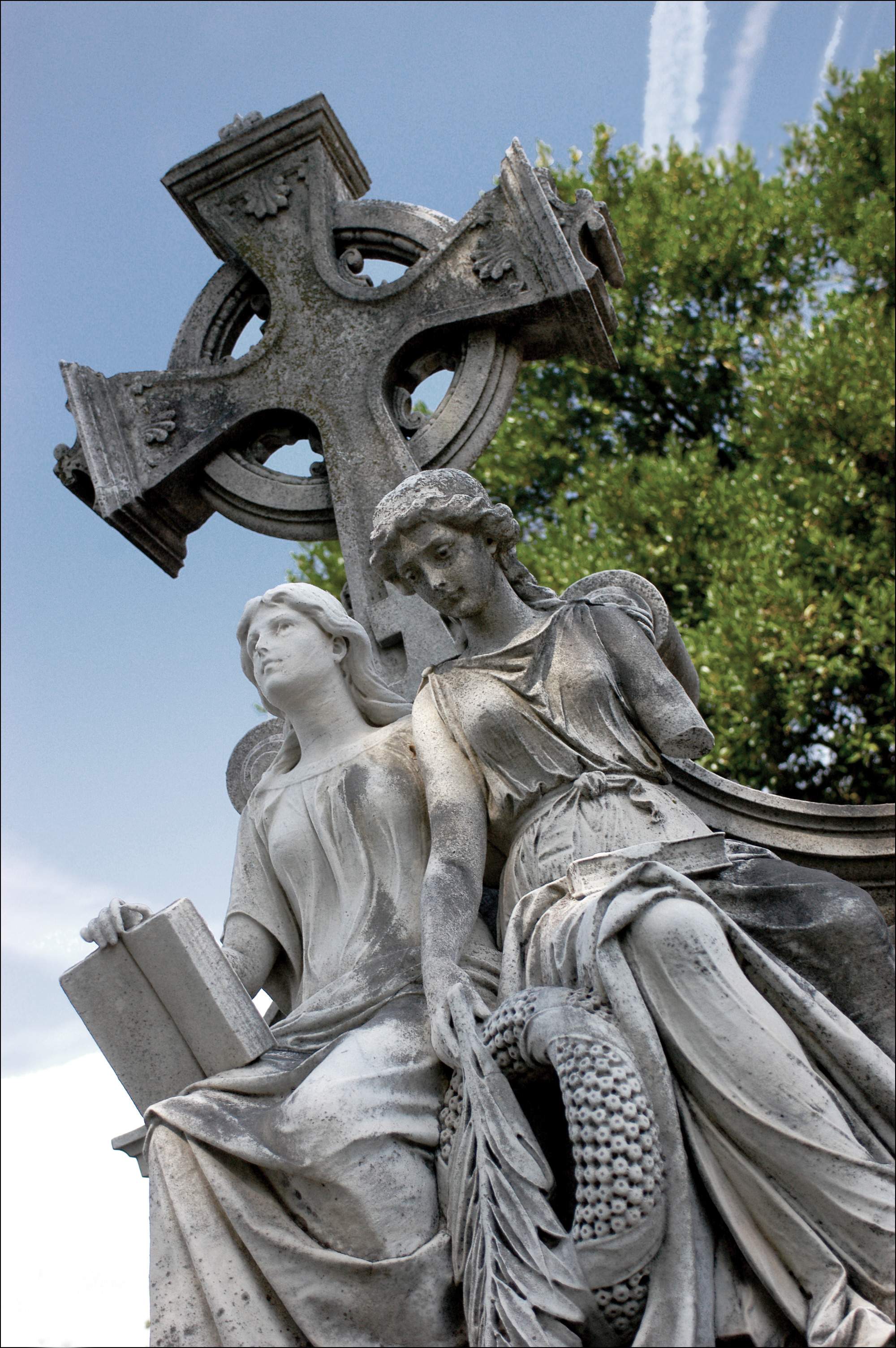 neal 100 slides of oakland024 page 4
neal 100 slides of oakland024 page 4
The Wife and Daughter Neal Monument, dating back to 1874, exemplifies the Victorians’ rich symbolic vocabulary for commemorating the dead. A Celtic cross dominates the monument, representing eternal life and Christ’s sacrifice, interwoven with Celtic artistic traditions. Books are prominently featured, likely Bibles: the closed book symbolizes a life guided by scripture, now completed; the open book represents the spiritual wisdom that leads to eternal life, aligning with the statue’s heavenward gaze. The laurel wreath and palm branch, traditional symbols of victory and triumph, here signify victory over death and the triumph of eternal life – common motifs in Victorian funerary art.
This monument holds another unique distinction: it was the first site adopted into Oakland’s Adopt-A-Plot Program. This program allows individuals and businesses to contribute to the preservation of Oakland’s historical monuments, ensuring these stories in stone endure for future generations.
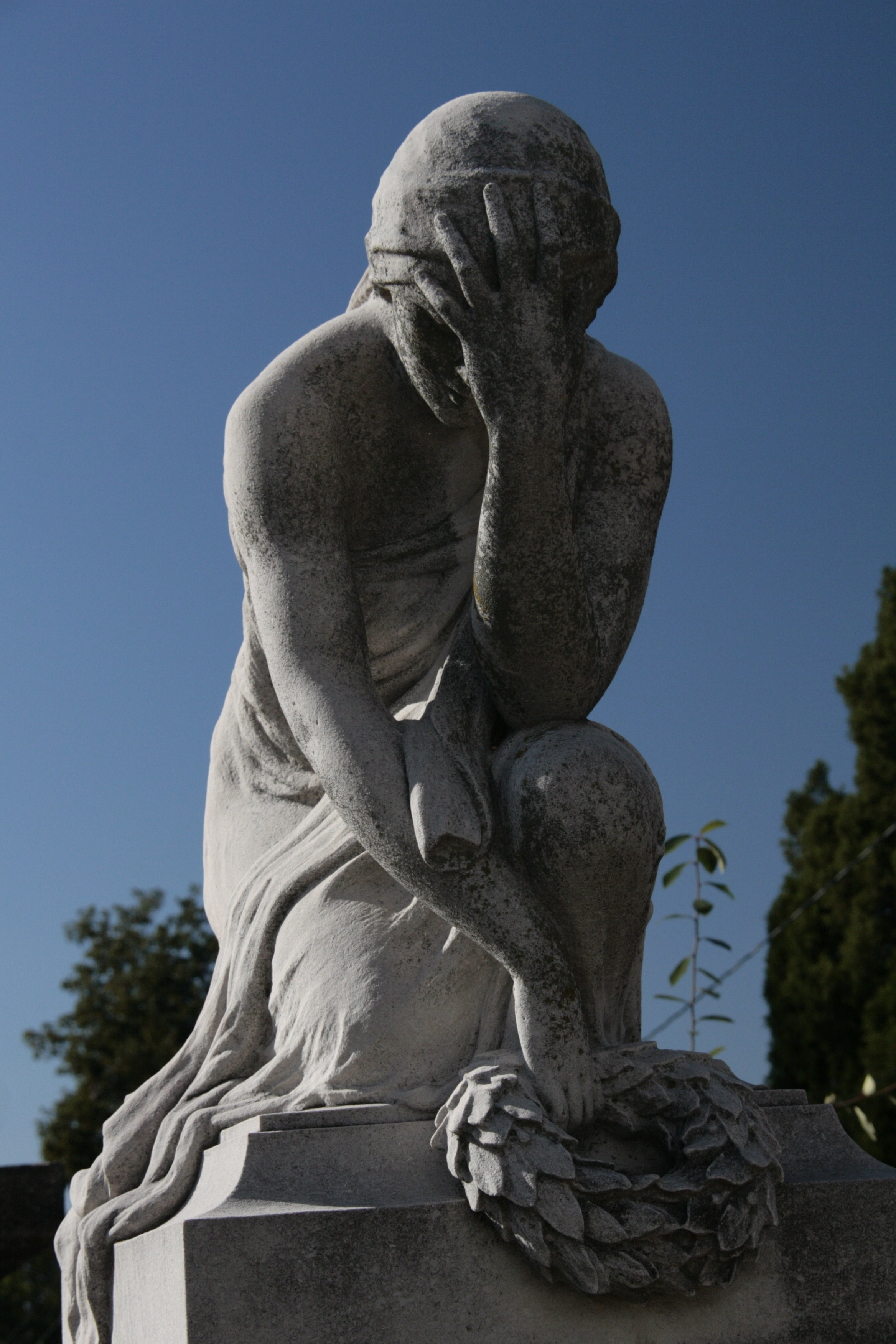 niobe_MG_2666 page 5
niobe_MG_2666 page 5
Our journey continues to the Gray Weeping Woman, completed in 1917. This statue depicts Niobe, a figure from Greek mythology, Queen of Thebes, known for her excessive pride in her numerous children. Her boastfulness angered the goddess Leto, who sent her children, Artemis and Apollo, to slay Niobe’s offspring.
In Victorian cemeteries, Niobe became the quintessential grieving mother, an enduring symbol of sorrow and loss. Local legend claims that under a full moon, tears can be seen streaming down her face, adding to the monument’s mystique and emotional power.
Niobe wears a wreath of laurel, a paradoxically placed symbol of immortality. While laurel wreaths typically represent victory and lasting fame, here, encircling Niobe’s head, it creates a somber ambiguity, highlighting the eternal nature of grief and remembrance even in defeat.
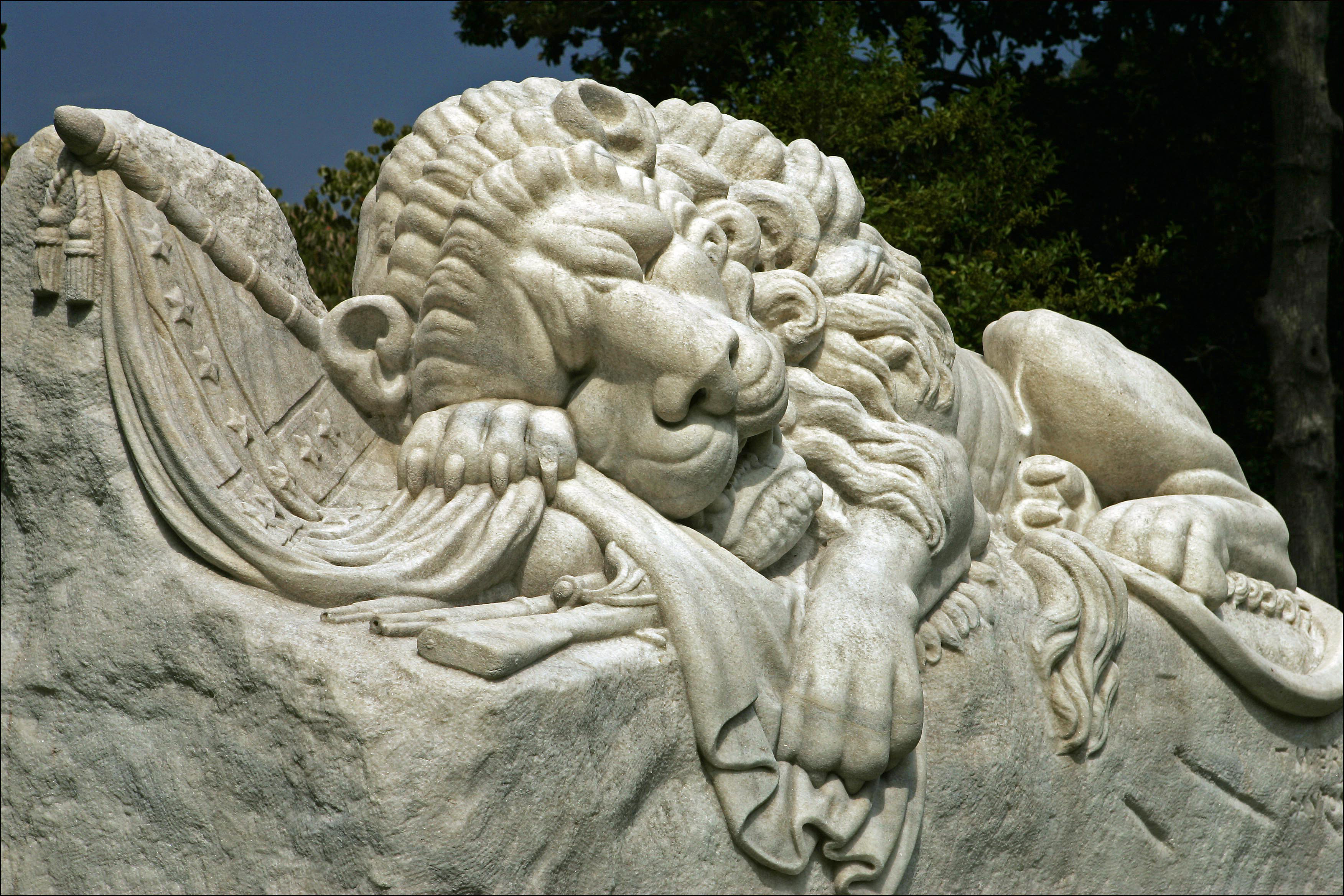 lion_G9B8092 page 6
lion_G9B8092 page 6
Finally, we arrive at the Lion of Atlanta, erected in 1894 by the Atlanta Ladies Memorial Association. This imposing monument honors approximately 3,000 unknown Confederate soldiers buried nearby. Carved from a massive piece of Georgia marble, the largest quarried in the US at the time, the lion rests upon a Confederate battle flag. The lion itself embodies courage, majesty, strength, and valor – qualities attributed to the fallen soldiers. The solid rock foundation symbolizes the unwavering conviction in their cause. The Confederate flag represents unity, and the rifle, a symbol of military power.
The Lion of Atlanta is modeled after the Lion of Lucerne in Switzerland, a tribute to Swiss Guards who died during the French Revolution. This connection adds a layer of universal commemoration to the monument, linking local history to broader themes of sacrifice and remembrance.
These five monuments offer just a glimpse into the symbolic richness of Oakland Cemetery. While photographs capture their beauty, they are no substitute for experiencing this extraordinary outdoor museum firsthand. My journey with Oakland began in 1988, and with each visit, I continue to uncover new stories and deeper meanings. For travelers seeking destinations that resonate with history, art, and profound symbolism, Oakland Cemetery awaits, ready to whisper its stories in stone.
Richard Waterhouse has been sharing his passion for Oakland Cemetery through tours since 1989. His expertise in cemetery symbolism led him to establish Waterhouse Symbolism in 2006, dedicated to researching and documenting gravestone symbols globally. For those interested in delving deeper into this fascinating subject, subscribe to Richard’s monthly e-newsletter by emailing rwsymbolism at gmail dot com. Richard also currently serves as Manager of Leadership Giving of Georgia Public Broadcasting Media in Atlanta, Georgia.
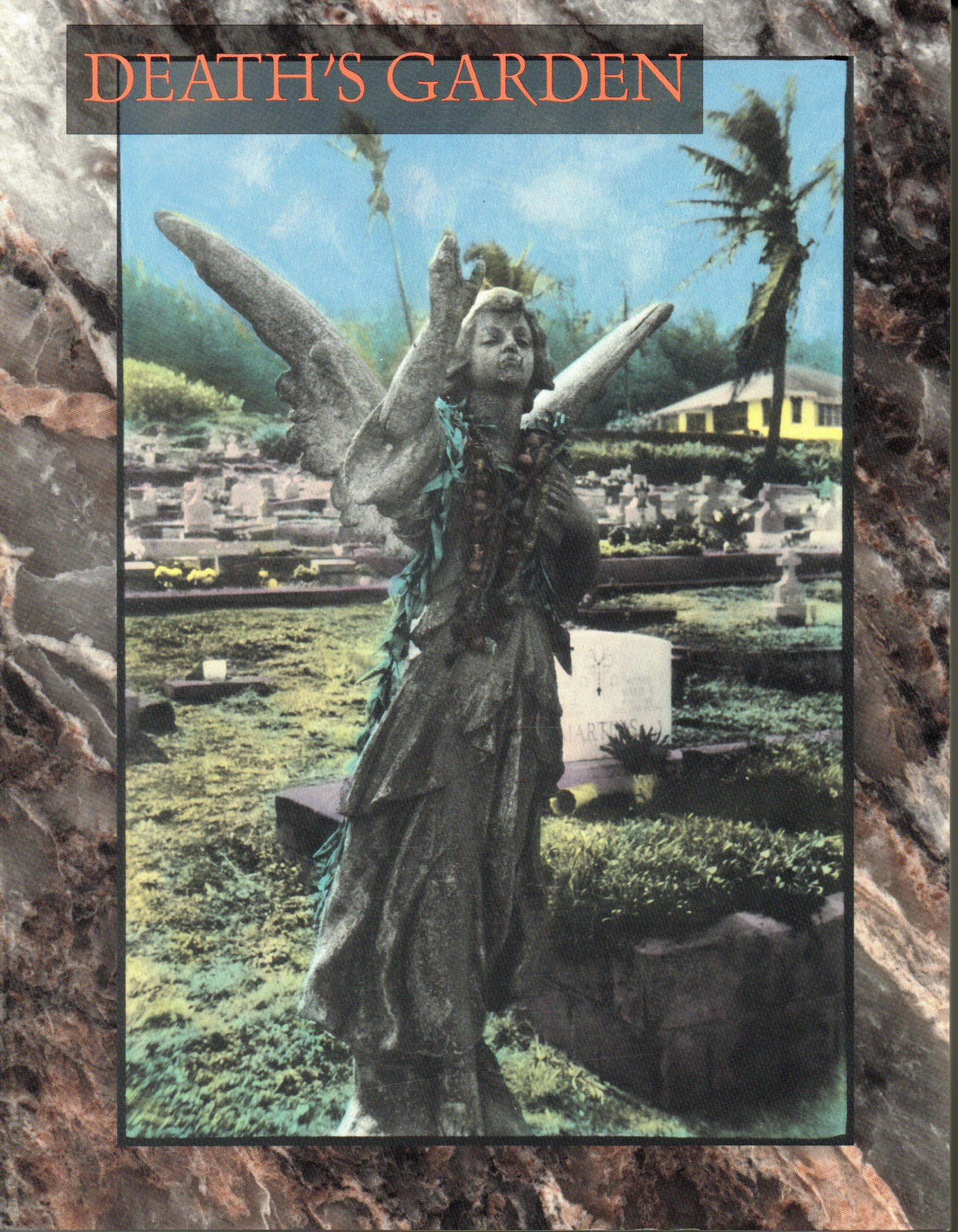 Death
Death
Explore More Cemetery Stories:
Discover more captivating cemetery essays every Friday. If you have a cemetery that has touched your life, especially one encountered during your travels, share your story! Submission guidelines are available here.
